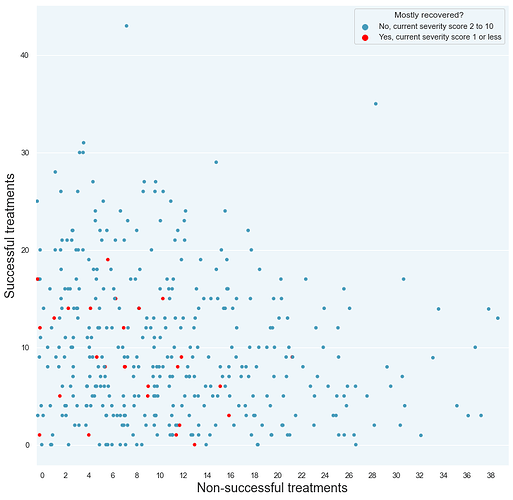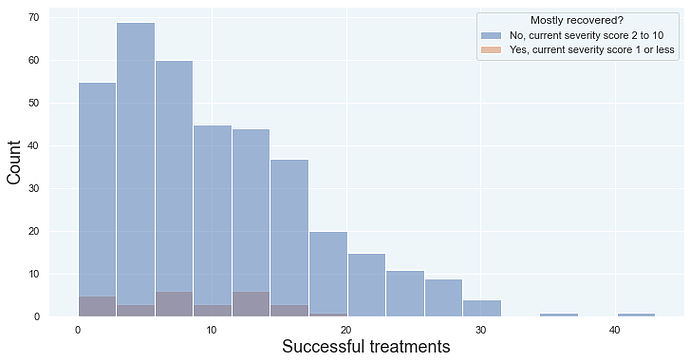- In the chart below, the red dots are the people who (mostly) recovered. The blue dots are the people who didn’t.
- Successful = either "mild improvement or “significant improvement”
You can see that the recovered reported fewer successful treatments and reported fewer non-successful treatments.
The diagram below is a histogram of the number of helpful treatments reported. Among non-recovered people, a few were reporting over 30 successful treatments. Which is… a lot.
Data from https://longhaulwiki.com/treatment-outcomes/
Patients are mostly post-vax.
How will this tidbit of information help you recover?
I don’t know what it means right now. Some theories and possibilities:
- Maybe trying a long list of treatments at the same time is a bad idea? My personal experience is that most treatments caused me to get worse.
- If you look at the data at face value, then you would be tempted to conclude that trying fewer treatments will somehow ‘help’. But I would point that that the recovered group was also trying a long list of treatments. There’s also a huge chunk of non-recovered people who tried just as many treatments as the recovered.
- Trying fewer treatments is what happens after people get their lives back.
If you have any ideas, feel free to leave a comment.
Some other patterns
The most success came from outside of conventional mainstream medicine. It just so happens that the top treatments didn’t come from conventional doctors. Statins are used widely in mainstream medicine but not for Long COVID or post vax.
*Not adjusted for popularity of treatments!
I don’t think that alternative medicine is necessarily superior. I have some serious concerns about what some practitioners are doing regarding:
- HELP apheresis, triple anticoag, etc.
- Blaming worsening of symptoms on detox or a Herx reaction
- Low quality of medical care
Nonetheless, while alternative healthcare has likely delivered fatal results for one patient, it has also been driving a lot of recoveries.
Wrapping it up
I just thought that this data was interesting… even if the fewer treatments thing isn’t really actionable.




